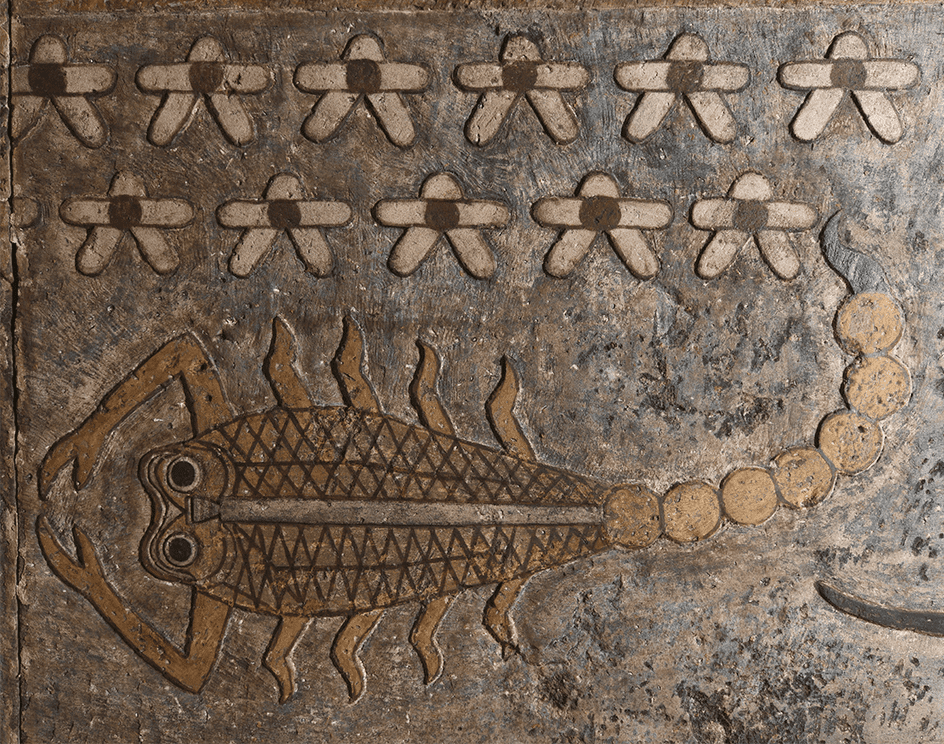An incredible series of relief paintings depicting the signs of the zodiac has been revealed on the ceiling of an ancient Egyptian temple. Known as the Temple of Esna, the site was constructed in honor of the ram-headed god Khnum and was covered with decorative artwork, including one of the most complete Egyptian star charts ever discovered.
In addition to the full zodiac, researchers also found reliefs showing the planets Jupiter, Saturn, and Mars, plus a series of constellations known as the decans, which were used to measure the passage of time during the night.
The zodiac is made up of 12 constellations that lie roughly along the ecliptic, which is the path the sun travels across the sky over the course of a year. Otherwise known as star signs, the zodiac constellations are thought to have been introduced to Egypt by the Ancient Greeks.

Representation of the constellation Scorpio, after restoration and re-coloring. Image credit: Ahmed Emam, Ministry of Tourism and Antiquities
“The zodiac was used to decorate private tombs and sarcophagi and was of great importance in astrological texts, such as horoscopes found inscribed on pottery sherds,” explained Dr Daniel von Recklinghausen from the University of Tübingen in a statement. “However, it is rare in temple decoration: apart from Esna, there are only two completely preserved versions left, both from Dendera.”
At the Temple of Esna, all that remains is a large sandstone vestibule that was placed in front of the main structure by the Roman Emperor Claudius in the first century CE. Over the past few years, von Recklinghausen and his colleagues have been painstakingly revealing and restoring the many incredible paintings that adorn the chamber.
Despite their age, the colorful decorations remain in fantastic condition thanks to the layer of mud that has protected and preserved them for around two millennia. Of course, this coating has also obscured the images from view, and researchers are working as delicately as possible to remove the dirt in order to reveal the illustrations without damaging them.

Representation of decans, zodiac signs used to measure the twelve hours of the night. Image credit: Ahmed Emam, Ministry of Tourism and Antiquities
In 2020, the team succeeded in uncovering an inscription that revealed the previously-unknown names of the ancient Egyptian constellations. The Big Dipper, for example, was named after the malevolent god Seth and was depicted in the shape of a bull’s leg.
The constellation we know as Orion, meanwhile, was associated with the deity Osiris, while Sirius – the brightest star in the night sky and part of the Canid Majoris constellation – was named after the Egyptian goddess Isis.
Further restoration efforts in 2022 revealed a series of stunning frescoes representing the vulture goddess Nekhbet and the serpent goddess Wadjet. Alongside the newly-uncovered zodiac, researchers also found images of fanciful creatures including a snake with a ram’s head and a four-winged bird with the tail of a snake and the head of a crocodile.
More than half of the structure’s ceiling has now been restored – although, with plenty of mud still to remove, it’s likely the team will uncover yet more incredible paintings over the coming years.
Source Link: Rare Complete Ancient Egyptian Zodiac Discovered On Temple Ceiling